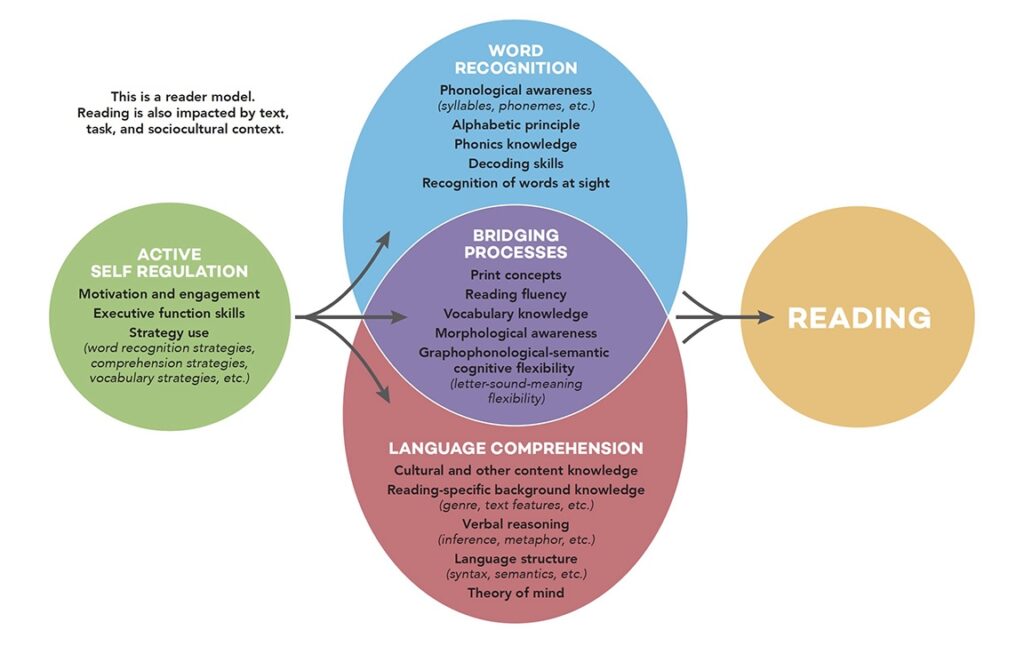Our evidence-based literacy approach builds on landmark research syntheses such as the National Research Council’s report “Preventing Reading Difficulties in Young Children” and the Institute of Education Science’s WWC report “Foundational Skills to Support Reading for Understanding in Kindergarten through 3rd grade.”
Specifically, we build on a recent synthesis called the Active View of Reading.

Developed by Nell Duke and Kelly Cartwright (2021), the Active View of Reading includes bridging processes between decoding and language comprehension. It also incorporates contextual factors related to self-regulation – such as motivation, engagement, and executive function skills – as impacting the process of reading through what Duke and Cartwright refer to as “text, task, and sociocultural context.”
The elements of text, task, and sociocultural context at the heart of U-GAIN Reading’s focused research are important not only in grades 1-3 reading but also in all K-12 reading interventions that use GenAI to create, adapt, and support learner interactions with text.
Two key findings from Duke and Cartwright’s (2021) research are particularly relevant to U-GAIN Reading. First, all students need high-quality guided practice with feedback in specific word recognition skills. Second, growth in reading hinges on the interactions among (a) the reader’s skills, knowledge, and background and (b) the resources provided for learning.
U-GAIN Reading, therefore, targets GenAI applications that not only address the fundamentals of evidence-based reading instruction but also adjust text, task, and context to connect with students’ variable needs, enhance engagement, and integrate comprehension more strongly into their reading activities.
Want to learn more about the science behind our research?
Join Our Interest List!
Subscribe to the U-GAIN Reading Center newsletter to stay informed about the latest project insights and opportunities.

The research reported here was supported by the Institute of Education Sciences, U.S. Department of Education, through Grant R305C240040 to Digital Promise Global. The opinions expressed are those of the authors and do not represent views of the Institute or the U.S. Department of Education.
